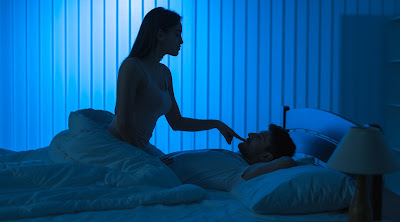Female Sexual Desire, it's complex
Did you know that female sexual desire is more complex than you might think? This article discusses the factors that affect female sexual desire. This article will look at cues, distractions, and exercise. And we’ll also discuss the Feminine hormone testosterone and its unrelated relationship with the female sex drive. Hopefully, you’ll find the information in this helpful article.
Cues for female sexual desire
There is little empirical research on female sexual desire. However, several studies have examined misjudgments of sexual cues. For example, Regan and Berscheid (1999) categorized cues into four categories: erotic/explicit, visual/proximity, and romantic/implicit. These factors were linked to different types of sexual desire and were more complex than one might think.
When we think about sexual desire, we usually think about how we feel when we have an intense urge to have sex. But in actuality, our sexual desire is far more complex than we might realize. For example, some people have intense sexual desire, while others have low libido. There experiencing low sexual desire often have a low libido, and they do not realize it. In such cases, it may take a certain situation for them to access the feelings of sexual desire.
The feminine hormone testosterone.
While many women suffer from low sex drive, some studies have shown that testosterone levels do not affect women’s sexual desire. Researchers have concluded that the hormone is not directly responsible for sexual desire in women and that the positive effects claimed by participants are most likely placebo effects. However, the question of how testosterone affects female sexual desire is a hot topic. There is more to this debate than just the hormone’s role in female sexual desire.
There is some evidence that age-related declines in testosterone may dampen a woman’s libido in midlife. During this time, a woman’s production of both hormones declines, with estrogen decreasing faster than testosterone. In fact, a woman’s testosterone production peaks in her early 20s and then gradually declines until she reaches menopause.
Distracting factors
Women report experiencing a range of distracting factors that inhibit their sexual desire. These can include pregnancy-related concerns, sexually transmitted diseases, and body image. Other nonerotic cognitive distractions women experience are worries about being rejected by their partner or sexually transmitted infections. Whether these factors cause a woman to feel a lack of desire during sex, these feelings can interfere with her ability to achieve orgasm. The physical drive may fuel a male’s sexual desire, but a woman’s desire is typically more responsive. It develops after initial sensual contact or a bunny vibrators that can spice up your relationship with your body.
In contrast, the physical drive of a woman can be fueled by distractions, such as fatigue, and can be debilitating. It is, therefore, important to understand how women’s sexual desires are affected by distracting factors. If you are experiencing a lack of sexual desire, the solution may be to change your environment.
Exercise
Many couples face difficulties in achieving sex, especially when there is a discrepancy between men’s and women’s sexual desires. This can lead to a destructive pursuer-distancer cycle. While male libido is thought to function similarly to female sex drive, they respond differently.
First, women have two types of desires: spontaneous and responsive. The former comes about spontaneously, while the latter comes about after a sexy event occurs. Thirty-five percent of women experience the latter type. While spontaneous desire can be unpredictable, responsive desire is more likely to come on a predictable schedule. Therefore, it’s important to know what causes each type of desire. The model can help you better understand the factors that affect a woman’s sex life.
Predictive factors
Deficient female sexual desire is a common problem for women. It is correlated with various factors, including age, relationship problems, and health issues. However, the relative contribution of each factor is not well understood. This study aimed to identify and assess the primary predictive factors of female sexual desire. The study involved 237 women of the general population who completed questionnaires on cognitive-emotional factors and psychopathology. The results indicate that female sexual desire varies significantly by age, relationship difficulties, and psychopathology.
Although the study design did not establish a causal relationship between the reported predictors and female sexual dysfunction, results indicate a positive relationship between age, gender inequality, and health. In addition, women with higher levels of physical and emotional problems are more likely to report low sexual desire. In addition, women who experience sexual pain and have urinary tract issues are more likely to have low desire. The findings are consistent with those of earlier studies.




Comments
Post a Comment